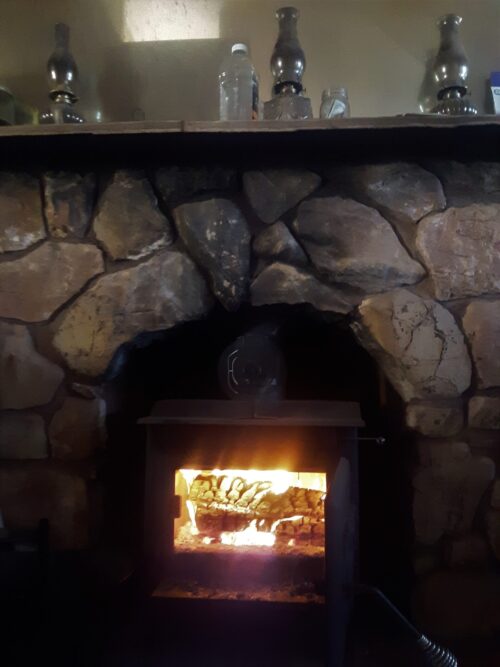
Hi, Phoenix here. With winter fast approaching, I’ve been thinking about the tasks we need to do on the homestead to prepare for winter. Some are the same as needed for on-grid households, like replacing weather stripping where needed. Others are more unique to an off-grid homestead. These are things I hadn’t thought about when I moved off-grid, so thought it useful to list them here.
- We need to get our 100-gallon propane tank filled and order 2 cords of wood to keep us warm through the winter. The propane usually lasts us a year, and we usually have a half cord left after winter to keep us warm on abnormally cold nights and stormy days during the rest of the year.
- There are also changes to our routines in taking care of the animals. During the rest of the year, we use self-watering troughs connected to water barrels. We fill these barrels on weekends and water flows into the troughs as the animals need it throughout the week.
In the winter, however, the hoses running from the barrels freeze, as does the water on the troughs and the top layer of water in the barrels. There are heated hoses and tanks, but these use a lot of electricity. There are also anti-freeze tanks with lids or valves the animals can open to get water. These work well for cattle. We’re not sure how they will work for smaller goats. We know they don’t work for chickens. We have used hanging chicken waterers, which seem to work, but they have lower capacity. Currently we try to keep the barrels from freezing solid by keeping them relatively full. We break up the layer of ice in the barrels and troughs, and transfer water into the troughs using buckets. This is an unpleasant task when our hands get wet in the freezing temperatures.
Recently I learned about partially burying large troughs to use geothermal heating to provide water to all the animals, perhaps a project for the summer. The ground here is really hard and this may not be possible. Yet another experiment in homesteading.
- Another change is the type of animal feed we use. During other parts of the year, the goats and sheep mostly forage. However, in the winter, we give them dry alfalfa in bale- and pellet- form. These bales are 100 lbs, and bags of pellets vary between 50 and 80 lbs, so this task is non-trivial, and the wear and tear on the human body is something to pay attention to if you don’t want to hurt yourself. We give the livestock dogs more food and the chickens some sweet feed/wet cob (grains with molasses) to help them stay warm.
- During the winter, K and I change our routines and habits to conserve electricity and stay warm. We use smaller electric lights and oil lamps instead of larger overhead lights. We try to keep a fire going in the wood stove from the evening to overnight and into the early morning to minimize the use of the propane heater. The sunroom keeps the house warm during the day. K uses fans in the sunroom to blow the warm air into the house.
On really cold nights, we leave the taps dripping (into containers) so the pipes don’t freeze. We also have a small propane heater in the pump room (where pipes carry water from the underground cistern to the upstairs water tank) to keep the temperature above freezing overnight. K opens up the window drapes to let warmth in during the day and closes them in the evening to keep the cold air out.
We make sure to dress in layers instead of keeping the house at a higher temperature.
These changes take some time to get used to–it’s taken me a year to get over the shock of the major ones, and another year for them to feel natural. Knowing these changes take time to get used to can help you plan and adapt more easily than I did.
Next blog post: Part 1: Lessons from temporarily returning to the grid (by Phoenix)
